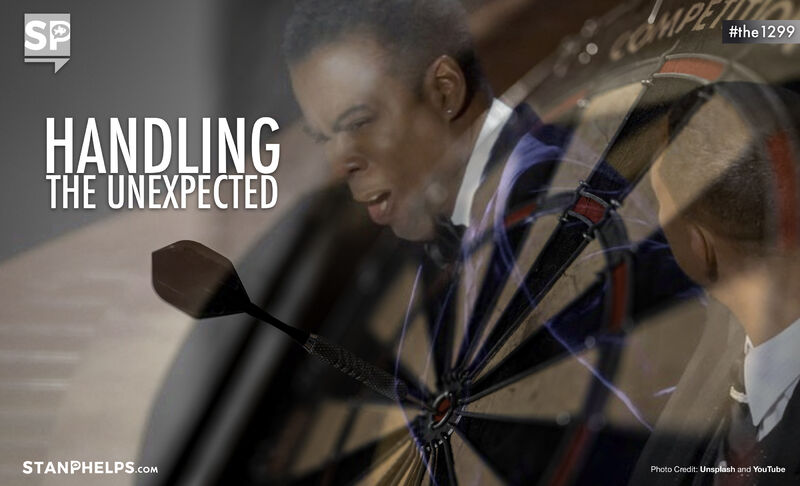Finish this sentence. Anything that can go wrong…
… will go wrong. It’s known as Murphy’s Law. It is a law you need to be aware of when presenting. Just ask comedian Chris Rock.
OK, so who is this Murphy character?
Capt. Edward Murphy was an engineer working on an Air Force Project. Project MX981 was designed to see how much sudden deceleration a pilot could withstand in a crash. One day, after finding that a transducer was wired wrong, he cursed the technician responsible, “If there is any way to do it wrong, he’ll find it.”
If Murphy’s Law is inevitable when presenting, what can you do? For example, at some point in your presenting career Murphy will appear and your slides will disappear due to no fault of your own.
The one thing you can do is to prepare. When I present, I always have a one-page list in my pocket. Written with a sharpie, it looks like a setlist for a band. At any point, I can pull it out and have no problem staying on track. If I’m giving a virtual presentation, I use a technique I learned from Laura Bergells. Laura calls it the turkey tail. Imagine a series of post-it notes that frame your monitor.
How about sound? What happens if your lavalier microphone dies or starts to intermittently cut out. No problem, always have a handheld microphone nearby.
Setbacks happen. Something is going to slap you in your face to rock your presentation. It’s how you respond. There are four typical responses. Think of it like a bullseye.
One reaction or the outer ring may be the worst. It’s called tanking. We give up and don’t try to cope. This is a flight response. The mindset here is that if we don’t try or if we find others to blame, then it doesn’t feel that bad. Presenters here either quit or mail it in.
Another response and next ring in is anger. This is a fight response. You get mad. But it’s hard to perform effectively when we are angry. It’s better than tanking, because at least you care.
A third response and the innermost ring is to try too hard. This is caring too much. You are too much in your own head. In sports, this is called choking. We get so wrapped up in the effort and the result that we fail to perform in the moment.
The last approach and the bullseye is the ideal response. It’s what sports psychologists call the challenge-response. We stay in the moment and see everything not as a problem but as a challenge to be overcome. Here the obstacle is truly the way.
TIP (To Improve Presentations) – Choose the Challenge-Response. When you can do this, you are able to present and work through whatever Murphy throws your way. You aren’t wrapped up in the result, and you are confident that you are giving your best under the circumstances. Often, you will gain a deeper rapport with your audience when you address the issue appropriately.
Follow me on Twitter or LinkedIn.

Stan Phelps walks the walk. He stands out in the sea of sameness by modeling his own Differentiated Experience (DX) message: Differentiation isn’t just about what you say, it’s about what you do and, more importantly, how and why you do it. Stan leverages his unique collection of 5,000+ case studies on customer, employee, and brand experience to engage audiences with informative learning-based experiences. He believes purposeful DX wins the hearts of employees and customers, and differentiation ultimately boosts loyalty, retention, referrals, and results.
Find Stan’s in-person and virtual keynotes, workshops, and Goldfish tank programs at StanPhelps.com.

